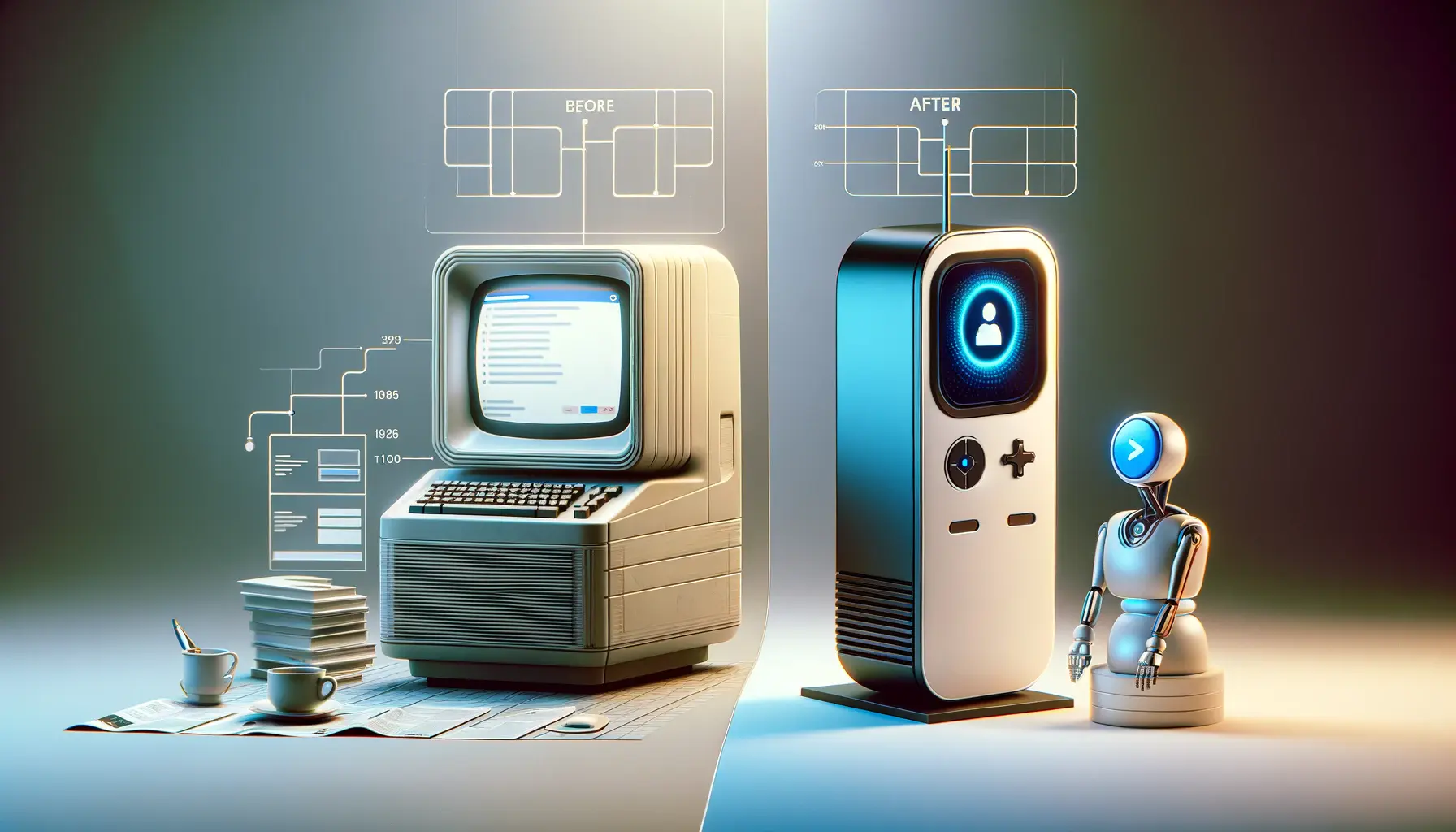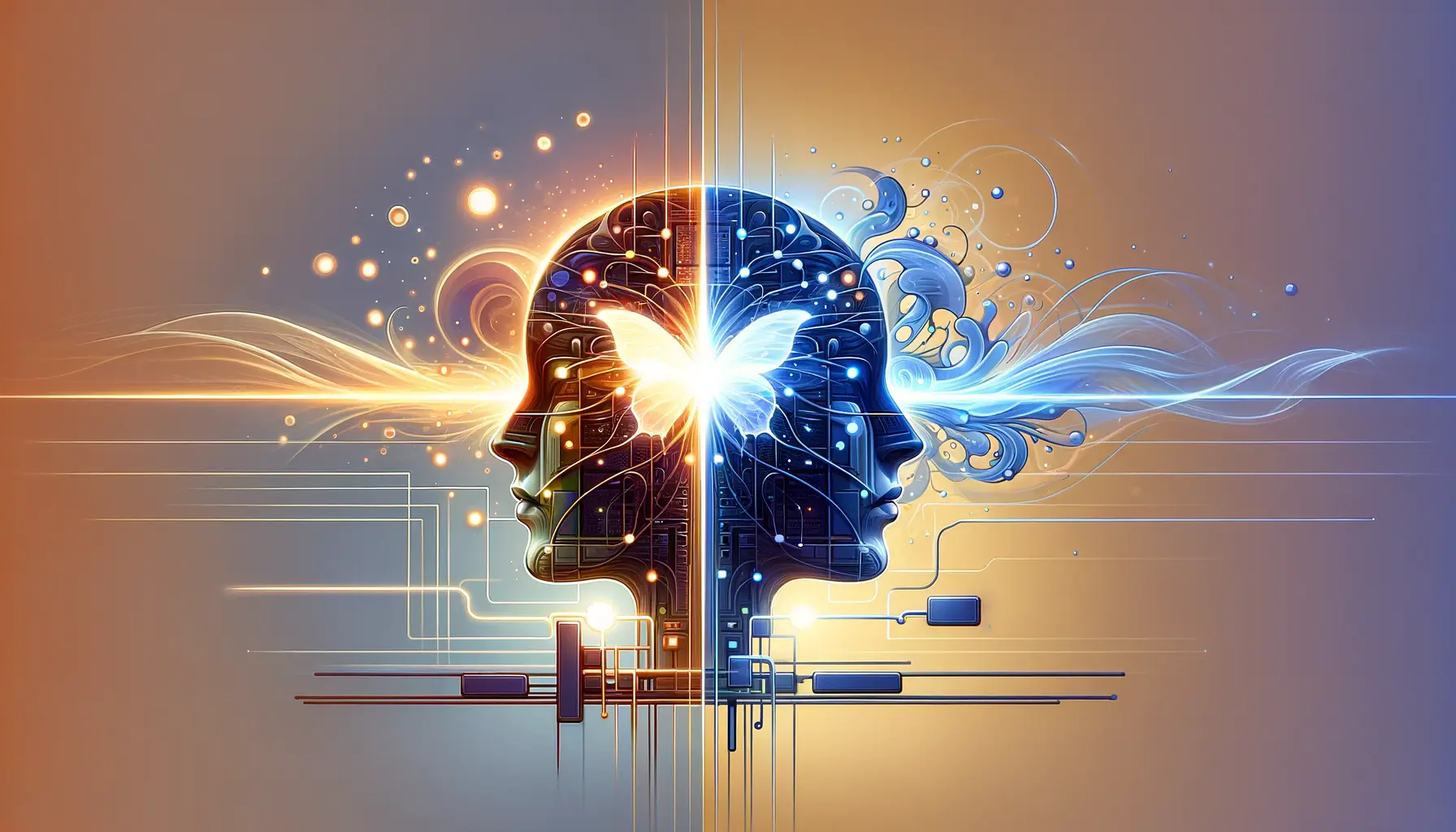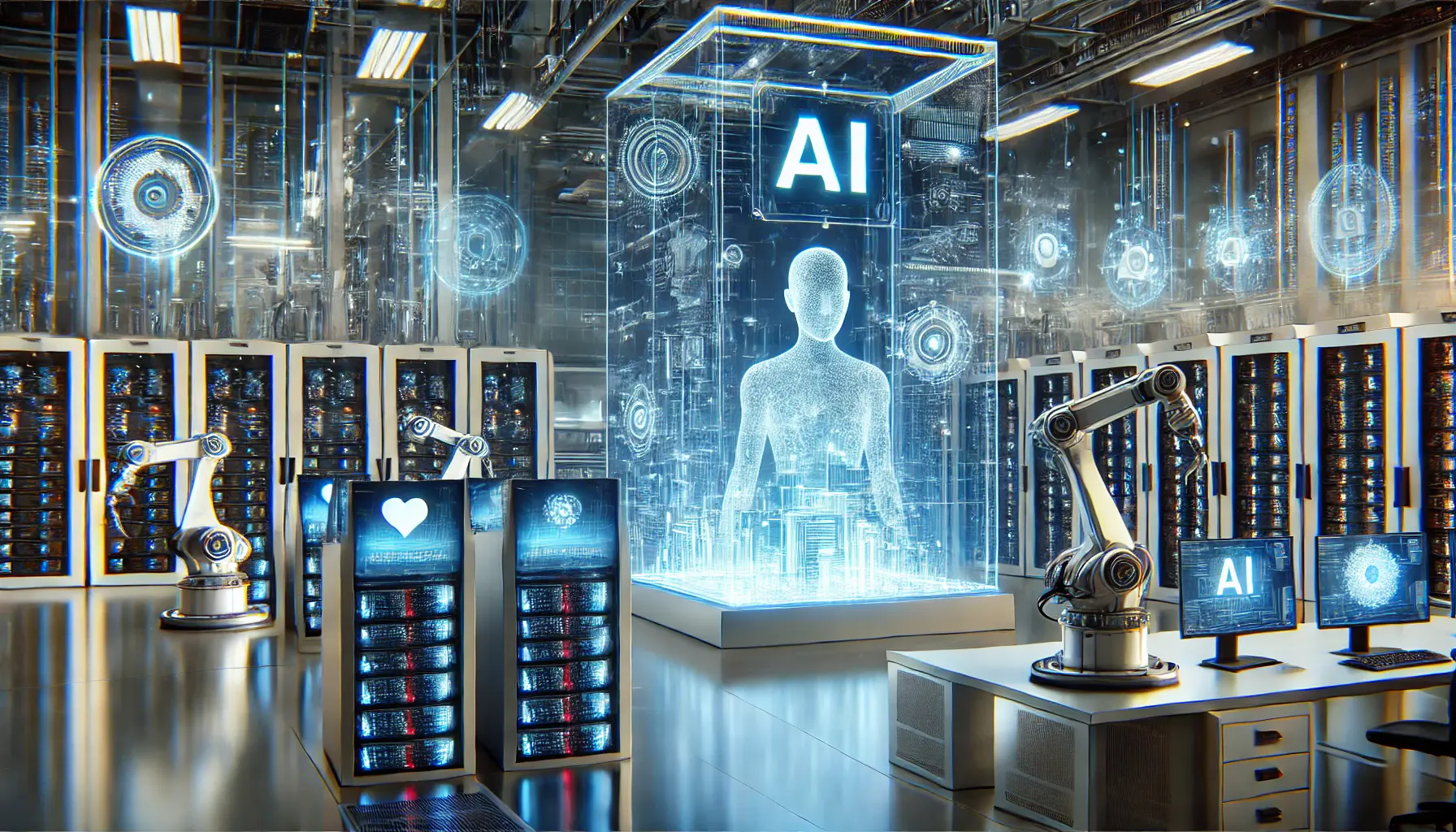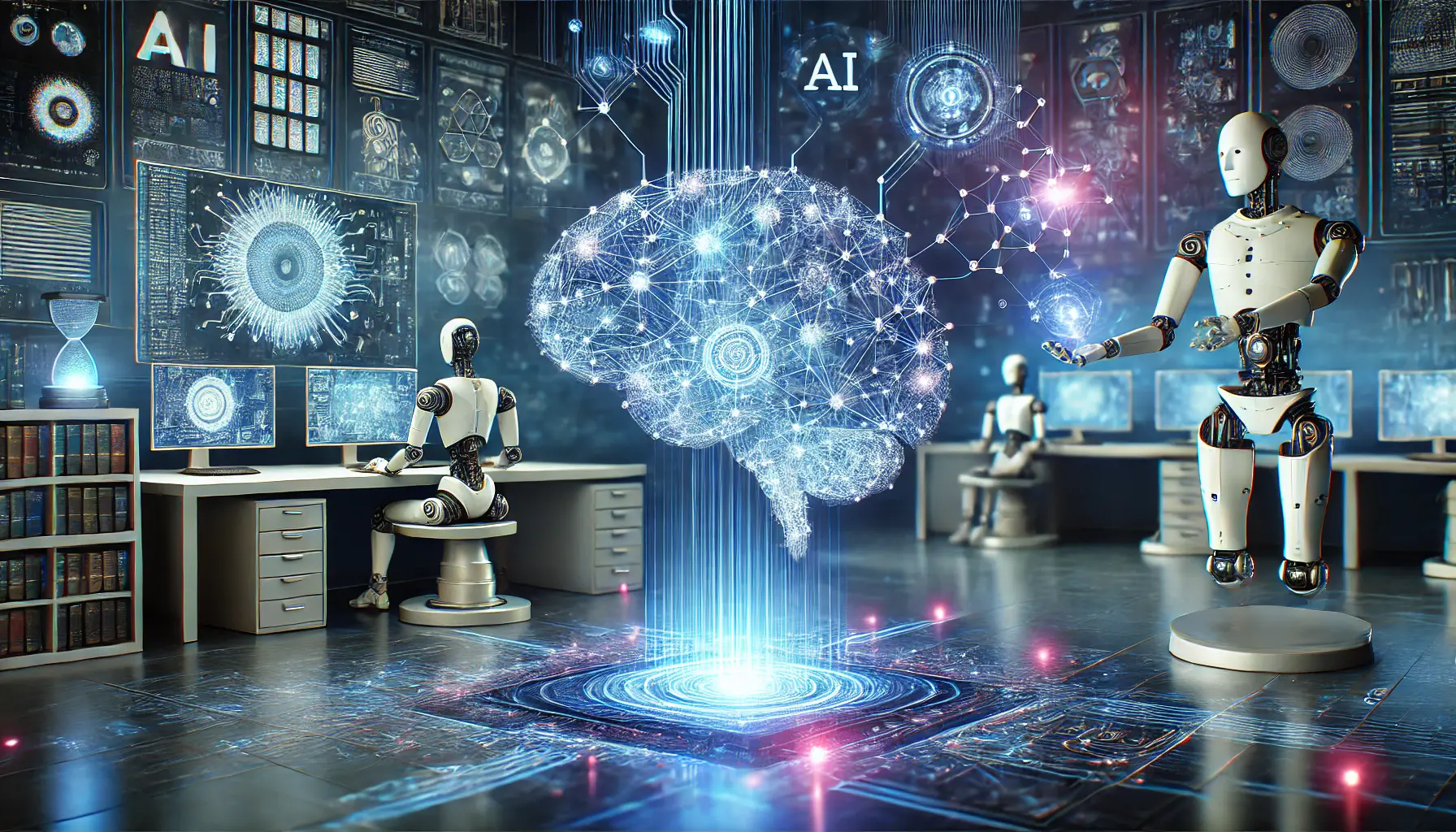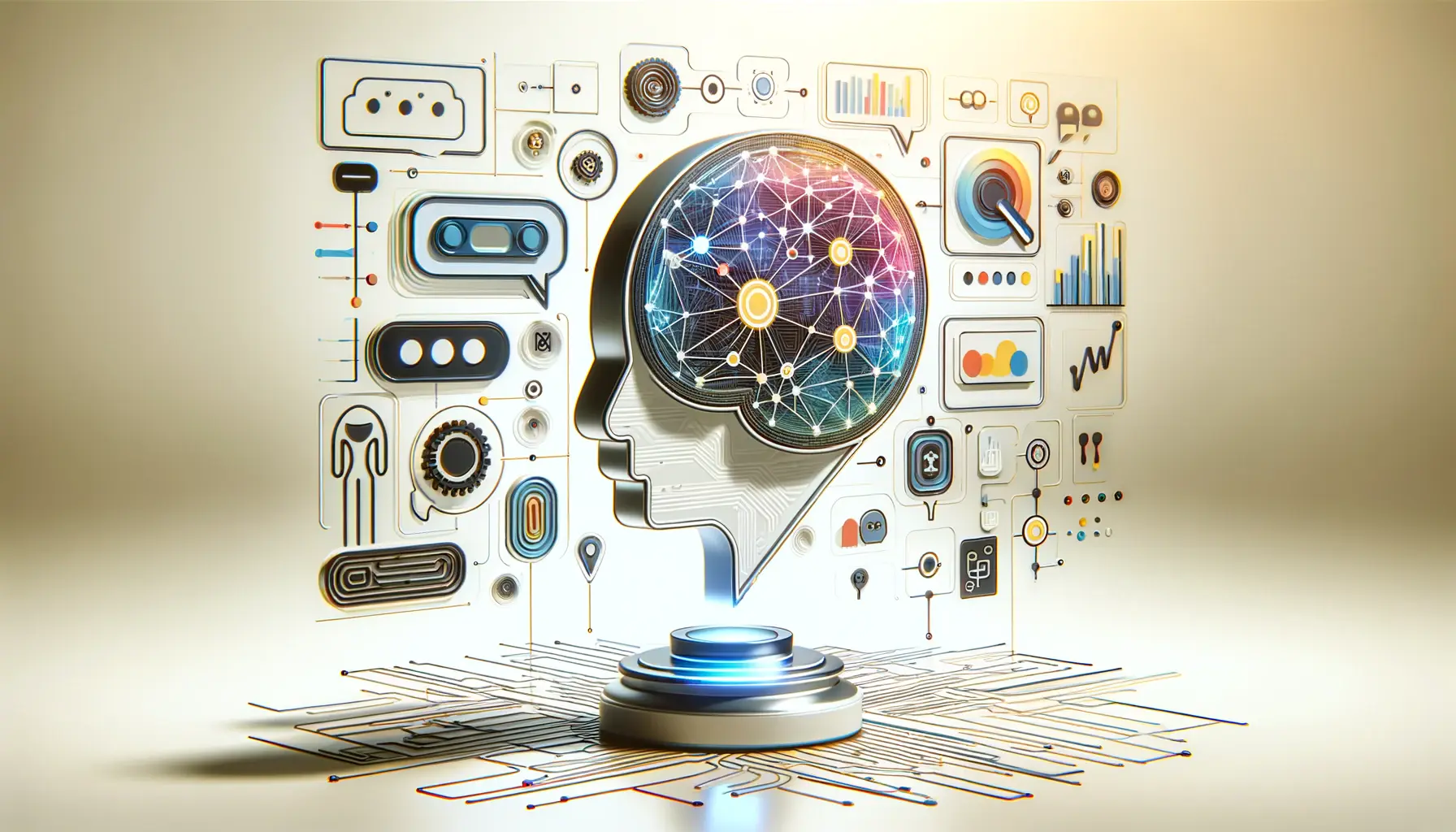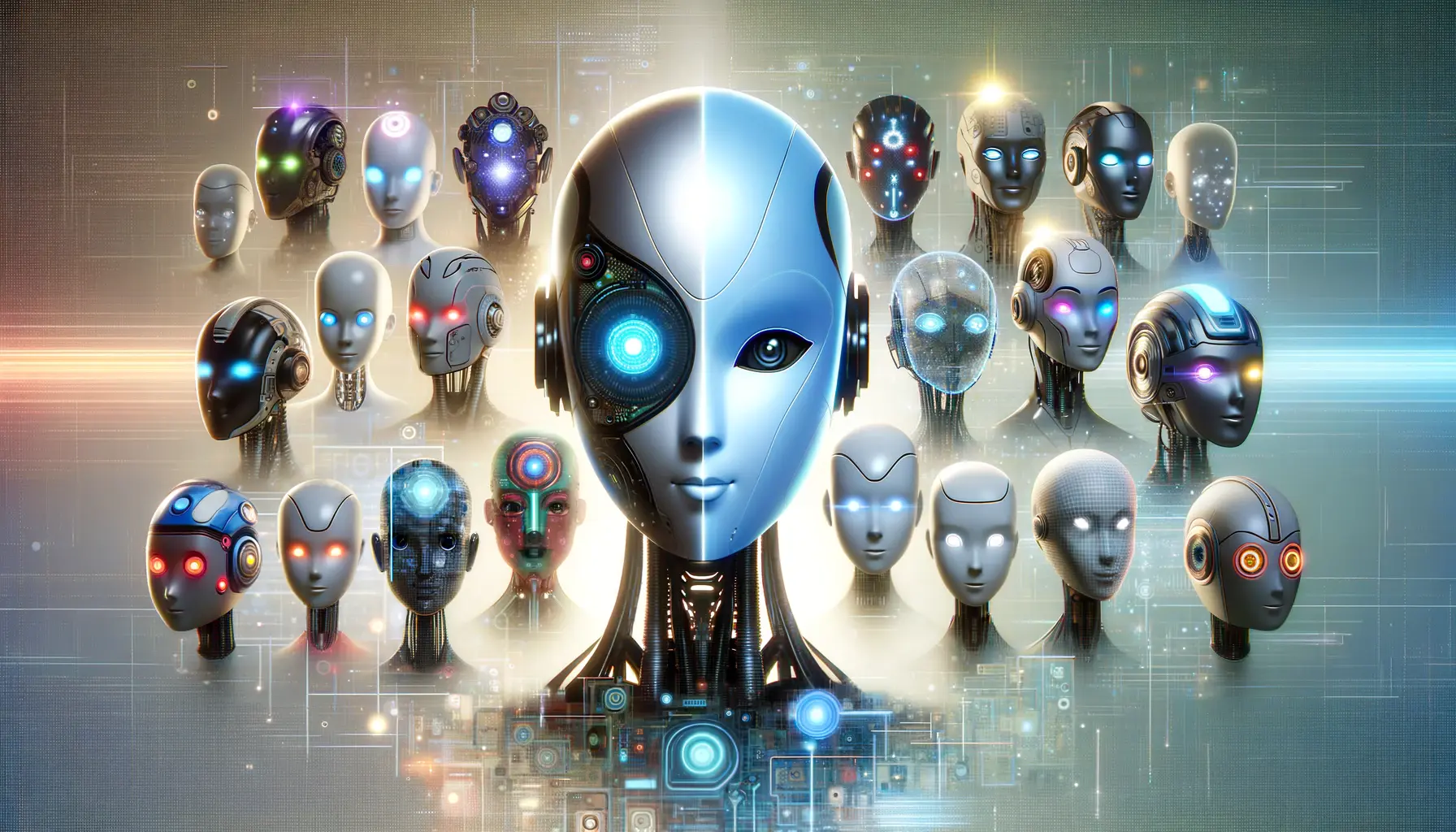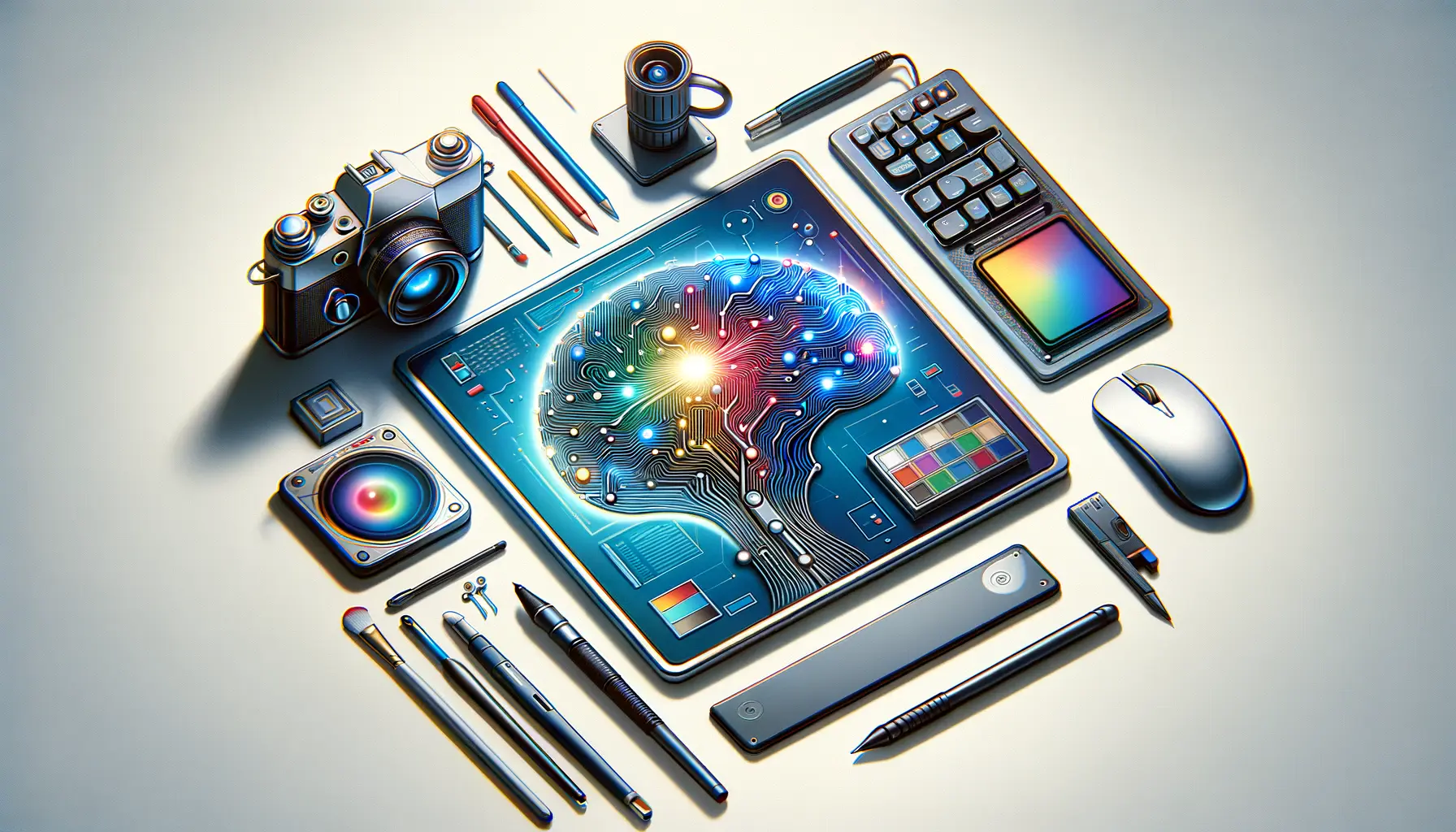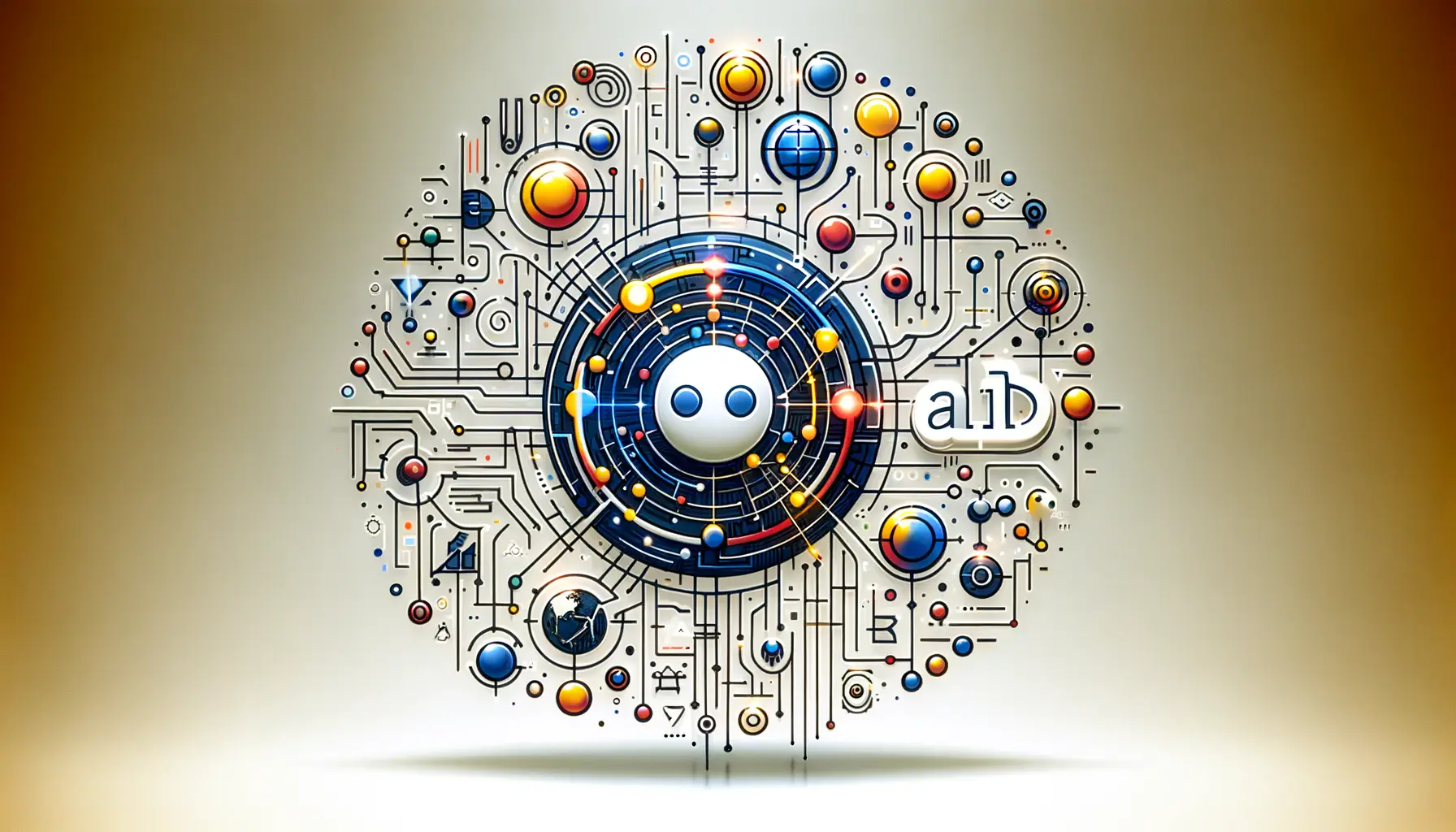The journey of artificial intelligence (AI) chatbots has been nothing short of revolutionary, marking significant milestones from their inception to the present day.
The evolution of these digital assistants reflects the advancements in AI technology and the changing needs of users.
In the realm of AI chatbots, Google’s Bard stands as a pivotal development, symbolizing a new era of conversational AI.
This article delves into the transformative journey of AI chatbots, highlighting the era before and after the introduction of Google’s Bard, to shed light on how these technologies have reshaped our digital interactions.
From rudimentary programs capable of basic interactions to sophisticated systems powered by advanced machine learning (ML) algorithms, AI chatbots have undergone a remarkable transformation.
The evolution is not just about technological advancements but also about the integration of these chatbots into our daily lives, influencing how we seek information, make decisions, and communicate.
Google’s Bard, in particular, represents a significant leap forward, showcasing the potential of AI chatbots to understand and respond to complex human queries with unprecedented accuracy and relevance.
- Origins and Early Developments
- The Rise of Google’s Bard
- Technological Foundations of Bard
- Comparative Analysis: Before and After Bard
- Challenges and Limitations
- Integrating Bard into Various Sectors
- Future Prospects of Conversational AI
- Embracing the Evolution: The Future of AI Chatbots
- FAQs on the Evolution of Google Bard AI Chatbots
Origins and Early Developments
The Dawn of AI Chatbots
The story of AI chatbots begins in the mid-20th century, with the creation of ELIZA by Joseph Weizenbaum in 1966.
ELIZA was a groundbreaking program that demonstrated the potential for machines to mimic human conversation, albeit in a limited capacity.
This early experiment laid the groundwork for future developments in conversational AI, sparking interest and research into how machines could understand and replicate human language and interaction patterns.
Following ELIZA, several other chatbots were developed, each contributing to the evolution of the technology.
These included PARRY in 1972, a more advanced chatbot that simulated a person with paranoid schizophrenia, and A.L.I.C.E.
(Artificial Linguistic Internet Computer Entity) in the mid-1990s, which utilized natural language processing to engage in more sophisticated conversations.
These early chatbots, while primitive by today’s standards, were crucial in exploring the possibilities of conversational AI and setting the stage for future advancements.
Evolution Through Machine Learning
The real transformation in AI chatbots began with the integration of machine learning algorithms, enabling chatbots to learn from interactions and improve over time.
This shift marked a departure from rule-based systems to more dynamic, context-aware chatbots capable of providing personalized responses.
Machine learning allowed chatbots to analyze vast amounts of data, recognize patterns, and make predictions, significantly enhancing their conversational abilities.
One of the key milestones in this evolution was the development of chatbots that could engage in specific tasks, such as customer service bots, personal assistants, and therapy bots.
These specialized chatbots demonstrated the practical applications of conversational AI, offering efficiency and accessibility in various domains.
The advent of platforms like Facebook Messenger and WhatsApp further propelled the use of chatbots, making them a common feature in our digital ecosystem.
The journey from ELIZA to today’s AI chatbots reflects a significant technological evolution, driven by advancements in machine learning and natural language processing.
The Rise of Google’s Bard
The advent of Google’s Bard marks a significant milestone in the evolution of AI chatbots, introducing a new chapter characterized by enhanced conversational capabilities and deeper integration into our digital lives.
As a product of Google’s pioneering AI research, Bard leverages the latest advancements in machine learning and natural language processing to offer a conversational experience that is remarkably human-like.
This section explores the development, capabilities, and impact of Google’s Bard on the landscape of AI chatbots.
Development and Capabilities
Google’s Bard was developed as part of the company’s ongoing efforts to refine conversational AI technologies.
Drawing on the power of Google’s LaMDA (Language Model for Dialogue Applications), Bard is designed to understand and generate natural language responses in a way that feels intuitive and engaging for users.
The key capabilities of Bard include:
- Understanding complex queries and providing accurate, contextually relevant responses.
- Generating creative and informative content across a wide range of topics.
- Engaging in free-flowing conversations that can adapt to the user’s intent and preferences.
These capabilities represent a leap forward in conversational AI, offering users a more natural and versatile way to interact with digital assistants.
Impact on Conversational AI
The introduction of Google’s Bard has had a profound impact on the field of conversational AI, setting new standards for what is possible with chatbot technologies.
The impact of Bard can be seen in several key areas:
- Innovation: Bard has pushed the boundaries of conversational AI, inspiring further innovation and research in the field.
- User Experience: By offering more natural and engaging conversational experiences, Bard has raised user expectations for AI chatbots.
- Application: Bard’s advanced capabilities have expanded the potential applications of AI chatbots, from education and entertainment to customer service and beyond.
Google’s Bard represents not just a technological advancement but a shift in how we perceive and interact with AI chatbots, heralding a future where digital assistants are more like conversational partners than tools.
Technological Foundations of Bard
The technological underpinnings of Google’s Bard are a testament to the rapid advancements in AI and machine learning.
At the heart of Bard’s capabilities is Google’s LaMDA, a cutting-edge language model specifically designed for open-ended dialogue.
This section explores the core technologies that enable Bard to deliver its impressive conversational abilities.
LaMDA’s architecture is built upon transformer models, which have revolutionized the field of natural language processing (NLP).
These models are adept at understanding the nuances of human language, allowing Bard to generate responses that are not only relevant but also contextually rich.
The key components of Bard’s technological foundation include:
- Transformer models that process words in relation to all other words in a sentence, enabling a deep understanding of language structure and meaning.
- Massive datasets of human conversations and text, which train Bard to recognize a wide array of dialogue patterns and respond appropriately.
- Continuous learning mechanisms that allow Bard to improve over time, adapting to new information and user feedback.
Advancements in Natural Language Understanding
The development of Bard has also been propelled by significant advancements in natural language understanding (NLU).
NLU enables Bard to grasp the intent behind user queries, making it possible to engage in more meaningful and coherent conversations.
This capability is crucial for interpreting complex questions, detecting nuances, and providing responses that accurately reflect the user’s expectations.
Furthermore, Bard’s NLU capabilities are enhanced by its integration with Google’s vast knowledge base, allowing it to pull in relevant information and present it in a conversational manner.
This integration not only improves the accuracy of Bard’s responses but also enriches the user experience by providing informative and contextually appropriate answers.
The technological foundations of Google’s Bard, particularly its use of transformer models and advancements in NLU, are key to its ability to understand and generate human-like dialogue, setting a new benchmark for conversational AI.
Comparative Analysis: Before and After Bard
The introduction of Google’s Bard into the AI chatbot landscape has prompted a reevaluation of how these technologies are developed and deployed.
By comparing the state of AI chatbots before and after Bard’s introduction, we can gain insights into the transformative impact of this technology.
This comparative analysis sheds light on the advancements in conversational AI and the shifting expectations of users and developers alike.
Before Bard, AI chatbots were primarily rule-based or utilized simpler machine learning models, which limited their ability to understand and generate natural language.
These limitations often resulted in chatbots that could handle only a narrow range of queries and struggled with complex or nuanced conversations.
The user experience was functional but lacked the depth and flexibility that modern users have come to expect from digital interactions.
Advancements in Conversational Capabilities
With the advent of Bard, the conversational capabilities of AI chatbots have seen a significant leap forward.
Bard’s use of advanced machine learning models, particularly LaMDA, has enabled a more nuanced understanding of language and context.
This has allowed Bard to engage in conversations that are more dynamic, personalized, and informative.
The difference is not just technical but also experiential, with users enjoying interactions that feel more natural and human-like.
- Understanding and Response Quality: Bard has raised the bar for how well chatbots understand queries and generate relevant responses, moving beyond simple keyword matching to grasp the intent and context of conversations.
- Personalization: The ability to tailor conversations to the individual user, based on their history and preferences, has been greatly enhanced, making digital assistants more helpful and engaging.
- Scope of Knowledge: Bard’s integration with Google’s vast information resources has expanded the range of topics and questions that chatbots can address, from general knowledge to specific queries.
Impact on User Expectations and Industry Standards
The introduction of Bard has also shifted user expectations and set new industry standards for conversational AI.
Users now expect chatbots to understand complex queries, offer personalized responses, and provide information that is both accurate and contextually relevant.
This shift has compelled other developers and companies to innovate, leading to a rapid evolution of the technology and its applications.
Furthermore, Bard’s success has demonstrated the potential for AI chatbots to play a more integral role in our digital lives, encouraging further investment and research in the field.
The impact of Bard extends beyond its technical capabilities, influencing how we interact with technology and envision the future of digital communication.
The comparative analysis before and after Google’s Bard highlights the significant advancements in AI chatbots, underscoring the evolution from simple, rule-based systems to complex, learning-based conversational agents.
Challenges and Limitations
Despite the groundbreaking advancements brought about by Google’s Bard and similar AI chatbots, there are still significant challenges and limitations that need to be addressed.
These issues not only highlight the current boundaries of conversational AI but also outline the areas where future research and development are crucial.
Understanding these challenges is key to appreciating the complexities involved in creating AI chatbots that are truly intelligent and versatile.
One of the primary challenges is ensuring the accuracy and reliability of the responses provided by AI chatbots.
While Bard and other advanced models have made significant strides in understanding and generating human-like text, they are not immune to errors.
Misinterpretations, factual inaccuracies, and inappropriate responses remain concerns that can impact user trust and the overall effectiveness of these technologies.
Ensuring Ethical and Responsible Use
The ethical and responsible use of AI chatbots represents another significant challenge.
As these technologies become more integrated into our daily lives, issues such as privacy, data security, and the potential for misuse become increasingly important.
Ensuring that AI chatbots are developed and used in a manner that respects user privacy and promotes positive societal values is a complex task that requires ongoing attention and regulation.
- Data Bias and Fairness: AI chatbots are trained on vast datasets that can contain biases. Addressing these biases to ensure fair and unbiased interactions is a critical challenge for developers.
- Transparency and Accountability: As AI chatbots become more sophisticated, ensuring transparency in how they operate and make decisions is crucial for building trust with users.
- Regulatory Compliance: Navigating the evolving landscape of regulations governing AI and data privacy is a challenge for companies deploying AI chatbots.
Technical Limitations and Future Directions
Technical limitations also pose challenges to the further development of AI chatbots.
Current models, while advanced, still struggle with understanding context over longer conversations, managing ambiguity, and generating responses that require deep domain expertise.
Overcoming these limitations will require not only improvements in AI algorithms and models but also innovative approaches to training these systems and expanding their knowledge bases.
The future of AI chatbots lies in addressing these challenges through continued research, ethical considerations, and technological innovation.
By focusing on these areas, developers can enhance the capabilities of AI chatbots, making them more reliable, ethical, and effective tools for a wide range of applications.
Addressing the challenges and limitations of AI chatbots is essential for their continued evolution and for realizing their full potential in enhancing our digital interactions.
Integrating Bard into Various Sectors
The integration of Google’s Bard into various sectors has demonstrated the versatile applications of AI chatbots beyond mere conversation.
From healthcare and education to customer service and entertainment, Bard’s advanced conversational capabilities are being leveraged to enhance efficiency, provide personalized experiences, and offer innovative solutions to complex problems.
This section explores the impact of Bard’s integration across different industries, highlighting the transformative potential of conversational AI.
Healthcare
In the healthcare sector, Bard has been instrumental in providing support for both patients and healthcare providers.
By offering instant access to medical information, symptom analysis, and appointment scheduling, Bard enhances patient care and streamlines administrative processes.
For healthcare providers, Bard serves as a valuable tool for accessing patient data, assisting with diagnosis, and staying updated on the latest medical research and treatments.
Education
The education sector has also benefited from the integration of Bard.
AI chatbots like Bard can personalize learning experiences, offering students tailored educational content and interactive learning sessions.
Bard can assist with homework, explain complex concepts, and provide a platform for language learning and practice.
For educators, Bard offers a way to automate administrative tasks, engage students in new ways, and access a wealth of educational resources.
Customer Service
Bard’s impact on customer service has been profound, transforming how businesses interact with their customers.
By handling inquiries, providing product information, and resolving issues around the clock, Bard enhances customer satisfaction and operational efficiency.
The ability to understand and respond to customer needs in real-time has set a new standard for customer service, making AI chatbots an essential component of modern business strategies.
Entertainment and Media
In the entertainment and media industry, Bard is redefining content creation and consumption.
From generating creative writing and music to powering interactive gaming experiences, Bard’s capabilities are being explored in novel ways.
For content creators, Bard offers tools for brainstorming, drafting, and editing, while consumers enjoy more engaging and personalized content.
The integration of Bard into various sectors underscores the broad applicability and transformative potential of AI chatbots.
By addressing specific industry needs and challenges, Bard is paving the way for a future where conversational AI plays a central role in our professional and personal lives.
The widespread integration of Google’s Bard across different sectors highlights the versatility and transformative impact of AI chatbots, offering innovative solutions and enhancing experiences across the board.
Future Prospects of Conversational AI
The future of conversational AI, particularly with innovations like Google’s Bard, is poised for exponential growth and transformation.
As technology continues to advance, the potential applications and capabilities of AI chatbots are expanding, promising more intuitive, intelligent, and integrated experiences in our digital and physical worlds.
This section explores the anticipated developments in conversational AI and the implications for users and industries alike.
The trajectory of conversational AI is marked by several key trends and prospects:
- Enhanced Personalization: Future AI chatbots are expected to offer even more personalized interactions, leveraging data analytics and user behavior to tailor conversations and recommendations to individual preferences.
- Greater Integration: Conversational AI will become more seamlessly integrated into devices and platforms, from smartphones and smart homes to cars and public spaces, making AI assistants more accessible and useful in a variety of contexts.
- Improved Understanding and Creativity: Advances in natural language processing and machine learning will enable AI chatbots to understand context and nuance better, engage in more creative problem-solving, and generate content that is increasingly indistinguishable from that created by humans.
- Expansion into New Domains: As AI chatbots become more capable, they will be deployed in new and diverse domains, from legal and financial services to mental health support and personal coaching, broadening their impact on society.
Challenges and Ethical Considerations
However, the future of conversational AI is not without challenges.
Issues related to privacy, data security, ethical use, and the digital divide will need to be addressed to ensure that the benefits of conversational AI are accessible and equitable.
Moreover, the ongoing development of conversational AI will require careful consideration of its social and ethical implications, including the potential for job displacement and the importance of maintaining human connection in an increasingly automated world.
In conclusion, the future prospects of conversational AI are both exciting and daunting.
The continued evolution of technologies like Google’s Bard promises to redefine our interaction with digital technology, making it more intuitive, personalized, and integrated into our daily lives.
By navigating the challenges and embracing the opportunities, conversational AI can significantly enhance our digital experiences and offer new ways to connect, learn, and engage with the world around us.
The future of conversational AI holds great promise, with advancements in technology poised to further enhance the intelligence and utility of AI chatbots, transforming our digital interactions and opening up new possibilities for innovation and connection.
Embracing the Evolution: The Future of AI Chatbots
The journey of AI chatbots, particularly with the advent of Google’s Bard, represents a significant leap in the evolution of conversational AI.
This article has traversed the origins, advancements, challenges, and the transformative impact of AI chatbots, culminating in a vision for their future.
As we stand on the brink of new discoveries and innovations in AI, it’s crucial to reflect on how far we’ve come and where we’re headed.
The Path Forward
The evolution of AI chatbots is not just a testament to technological advancement but also a reflection of our society’s growing reliance on digital assistants.
Google’s Bard, with its sophisticated understanding of language and context, has set a new benchmark for what is possible, pushing the boundaries of human-AI interaction.
The path forward for AI chatbots is marked by several promising developments:
- Deeper integration into our daily lives, making technology more accessible and intuitive.
- Advancements in personalization, ensuring that AI chatbots can cater to the unique needs and preferences of each user.
- Expansion into new domains, demonstrating the versatility and potential of AI chatbots to contribute across various sectors.
However, this path is also fraught with challenges, from ethical considerations to technical limitations.
Addressing these challenges head-on is essential for the sustainable and responsible development of conversational AI.
Shaping the Future Together
The future of AI chatbots, particularly in the era of Google’s Bard and beyond, is not solely in the hands of developers and technologists.
It requires a collaborative effort involving policymakers, ethicists, and the general public to ensure that the evolution of AI chatbots aligns with societal values and needs.
As we look to the future, it’s clear that AI chatbots have the potential to:
- Enhance our ability to access information and make informed decisions.
- Improve the efficiency and personalization of services across industries.
- Foster new forms of creativity and innovation, opening up uncharted territories for exploration.
In conclusion, the evolution of AI chatbots is an ongoing journey, one that holds immense promise for transforming our digital and physical worlds.
By embracing the advancements, navigating the challenges, and fostering a collaborative approach to development, we can ensure that the future of AI chatbots is bright, inclusive, and aligned with the best interests of humanity.
The evolution of AI chatbots, epitomized by Google’s Bard, is not just a technological narrative but a blueprint for the future of human-machine collaboration.
FAQs on the Evolution of Google Bard AI Chatbots
Explore commonly asked questions about Google Bard AI Chatbots and their impact on the evolution of conversational AI.
Google Bard AI is an advanced chatbot designed to generate text and answer questions with high accuracy, leveraging Google’s vast data and AI technologies.
Bard utilizes Google’s LaMDA technology for natural language processing, understanding context and generating relevant, human-like responses.
Yes, Google Bard AI can generate creative content, including stories, poems, and more, by understanding and mimicking human creative writing styles.
Its integration with Google’s search capabilities and LaMDA technology sets Bard apart, offering more accurate and contextually relevant responses.
Initially, Bard’s availability was limited, but Google is expanding access, aiming for global availability with ongoing updates and improvements.
Bard AI has the potential to revolutionize education by providing personalized learning experiences, instant information access, and interactive tutoring.
While advanced, Bard faces challenges like ensuring response accuracy, managing data privacy, and overcoming biases in AI-generated content.
Bard AI is shaping the future by enhancing digital communication, driving innovation in AI applications, and setting new standards for conversational AI.
